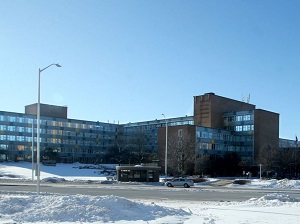 Friday, May 17, 2024
Friday, May 17, 2024  Friday, May 17, 2024
Friday, May 17, 2024 
More than a quarter of all federally owned, leased or licensed buildings in the Ottawa-Gatineau area, including many landmark downtown buildings, are in critical or poor condition, according to the government’s own assessment.
Of 2,197 National Capital Region buildings listed in the Treasury Board Secretariat of Canada’s Directory of Federal Real Property, 187 are in critical condition and 409 are in poor shape, accounting for 27 per cent of the total. Six-hundred and ninety (31 per cent) are listed in good condition, while 712 (32 per cent) are listed as fair. An additional 199 (nine per cent), all of them licensed or leased, are unrated or listed as “unknown.”
All of the buildings listed as critical or poor are Crown-owned, pushing the portion of critical and poor buildings to 30 per cent of all federally owned buildings in the National Capital Region.
This is a marked increase from just three years ago, when the Ottawa Business Journal reported that 18 per cent of federally owned buildings in Ottawa were in poor or critical shape.
Among those currently listed as critical are the Sir Charles Tupper Building on Riverside Drive; the Taxation Data Centre on Heron Road, Place de Portage’s Phase IV in Gatineau, the National Printing Bureau on boulevard Sacré-Coeur in Gatineau and the Supreme Court building on Wellington Street.
According to the Treasury Board Secretariat, a structure is rated critical when “(operations and maintenance) costs are high, and frequent emergency maintenance and repair are required. Risk of building and building systems failure is high.” The classification is similar, it adds, to a Facility Condition Index classification greater than 30 per cent, meaning if would take an investment of 30 per cent or more of the building’s value to bring it up to current standards.
Chris Aylward, national president of the Public Service Alliance of Canada, says the government must do more to address the situation. “It’s very concerning to us because the health and safety of our members are being put at risk.
“One of the things that (Prime Minister Justin) Trudeau made a priority was infrastructure investment, and federal buildings have deteriorated considerably under this prime minister. We need the prime minister to deliver on (his) commitment.”
According to the Treasury Board Secretariat, there were 121,230 federal employees working in the National Capital Region as of March 2019.
The average age of the area buildings listed as critical is about 73 years, and although many are old barns, silos and other farm buildings, others are among Ottawa’s most historic office and retail buildings. Great swaths of the downtown core, particularly on Wellington and Sparks streets, fall into this category.
Keep reading in the Ottawa Citizen
Deadline for this week in Friday at noon